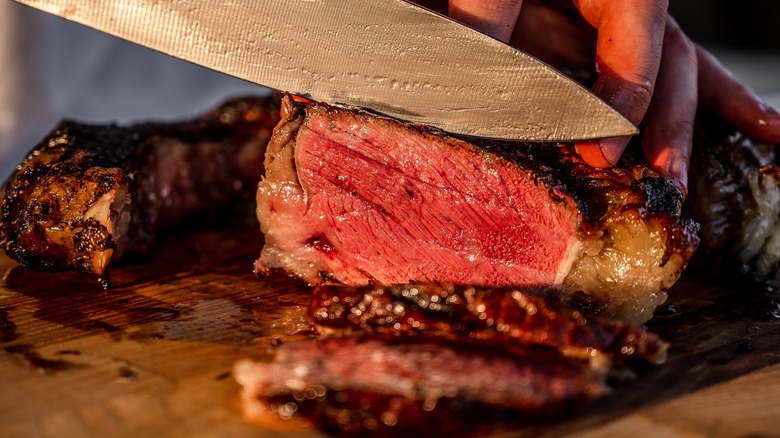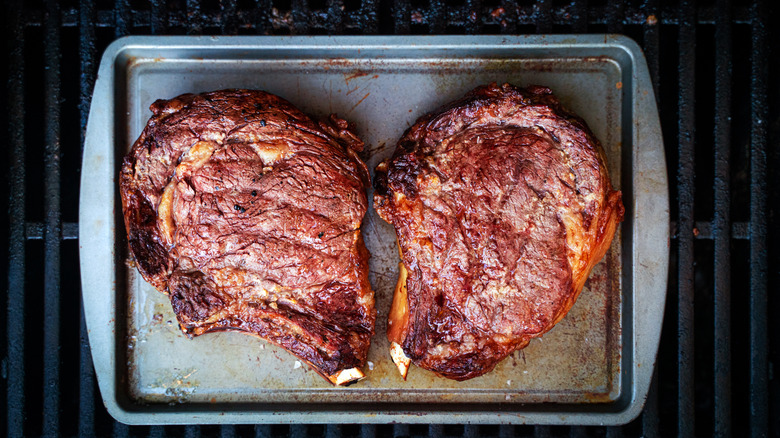The Cooling Rack Tip For Perfectly Rested Meat Every Time
If you love meat, chances are you love grilling it. The smell of it on the grill, the smoky flavor — there's a reason grilling is one of the great American past times. One of the aspects of grilling meat (or just cooking it in general) that pretty much everyone has caught onto by now is you don't want to just take it off the grill and immediately take a huge bite. You have to let it rest first. Using a cooling rack is one especially handy way to do so.
Resting a steak isn't only done to keep a hot steak from burning you. It's also because it makes for a better, juicier bite and a product that won't dry out as you eat it. Using a wire rack is an additional trick to resting meat, and it's one you probably aren't currently doing. Elevating your meat while letting it rest after grilling or searing, rather than just letting it sit on a plate, serves a particular function: The reason for doing so is that it allows the meat to rest fully, evenly, and at a more uniform temperature.
Elevating resting meat lets it rest fully evenly
The key to why you want to rest your meat in the first place is thermodynamics. Most people know that all the juices spill out when you cut into a steak immediately after cooking. However, resting a steak allows the liquid dispersed during the cooking process to migrate back into the meat. Most people think this just has to do with soaking the center of your steak in the juices that were edged out during the cooking process. On the contrary, here is why resting really works: it has to do with temperature. As meat cools, the muscle fibers loosen, releasing tension and allowing for more moisture retention. This causes the juices to absorb back into the meat and, once cooled, stay there.
Elevating steak accomplishes all this, but with the added benefit that the meat rests totally evenly because the bottom isn't exposed to a different temperature than the top. Suspending the steak ensures that you get maximum benefit out of the resting process and won't wind up with a temperature differential. There's a similar reasoning at play as to why you want to let your steaks warm up to room temperature from the fridge before you cook them on the grill — temperature makes a massive difference.
There are plenty of other resting secrets, too
In general, the rule with resting is to let the meat sit for around half its total cooking time. If you cooked a steak for 10 minutes, you'll want to let it rest for five — unless you're dealing with something larger like an entire turkey, which takes hours to cook but shouldn't rest nearly that long (20 to 40 minutes is fine). You can check the internal temp with a thermometer if you really want — what you're going for, no matter the doneness is around 120 degrees Fahrenheit. Lastly, don't ever rest meat under foil; the foil acts to lock in steam and will turn that crispy crust into a sad, soggy mess.
Ultimately, grilling is an uncomplicated concept, but one where seemingly simple, subtle alterations can make a huge difference. If you take the time to master little moves like resting your food while elevated, your food will taste better, and your guests will wind up happier.


